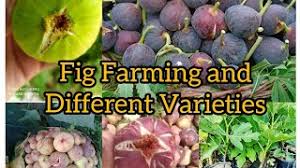HOW TO START A SUCCESSFUL BARLEY FARMING OPERATION NOW?


Barley is mainly produced in the Western Cape under dry land conditions. Two-thirds of our barley is produced in the areas around Caledon, Bredasdorp, Napier, Swellendam, Heidelberg and recently, patches of the Swartland region too. The remainer of the barley production is in the Northern Cape under irrigation – Vaalharts, Douglas, Barkley West and Modderrivier. Barley is also grown by some small-scale farmers at Taung in the North West Province.
The barley marketing season in South Africa commences on 1 October and ends on 30 September the following year. After wheat, barley is the most important small grain in South Africa. Its main uses includes:
* production of malt – used for the brewing of beer;
* animal feed; and
* pearl barley.
Planting
The planting equipment used for wheat is also suitable for barley. Do not plat barley seed too deep, as this can affect seedling emergence. Planting density can range from 65kg/ha to 100kg/ha depending on the state of the seedbed, planting date, irrigation method and planter used. The average recommended planting density is 80kg/ha, given a 100% germination capacity as well as a 1000 kemel weight of approximately 40kg. Aim to establish 130 to 140 plants/m2 at harvesting. Between 65kg/ha and 80kg/ha seed ought to be sufficient under centre pivot conditions with optimal seedbed preparation.
In -expensive and easy to grow, barley provides exceptional erosion control and weed suppression in semi – arid regions and light soils. It also can fill short rotation niches or serve as a topsoil protecting crop during drought y conditions in any region. It is more salt tolerant than other small grains and can sop up excess subsoil moisture to help prevent saline seep formation. Barley prefers cool dry growing areas. As a spring cover crop, it can be grown farther north than any other cereal grain, largely because of its short growing period. It can also produce more biomass in a shorter time than any other cereal crop.
BENEFITS
Weed Suppressor
Quick to establish, barley out-competes weeds largely by absorbing soil moisture during its early growing stages. It also shades out weeds and releases allelopathic chemicals that help suppress them.
Pest Suppression
Barley can reduce incidence of leaf-hoppers, aphids, army-worms, root – knot nematodes and other pests, a number of studies suggest.
Nurse Crop
Barley has an upright posture and relatively open canopy that makes it a fine nurse crop for establishing a forage or legume stand. Less competitive than other small grains, barley also uses less water than other covers crops.
NEED TO KNOW MORE OR NEED A PROFESSIONAL BUSINESS PLAN TO APPROACH AVAILABLE INVESTORS CONTACT US NOW AT: money@global.co.za or (27)84 583 3143.


HOW TO START A SUCCESSFUL BARLEY FARMING OPERATION NOW? Read More »

























